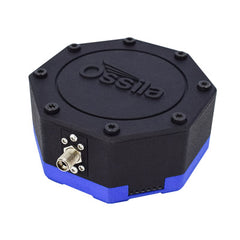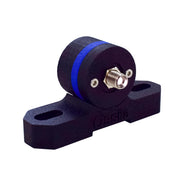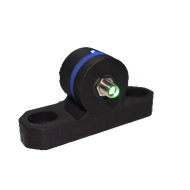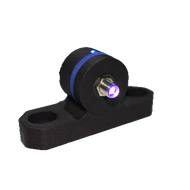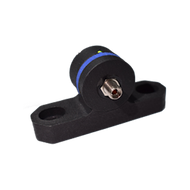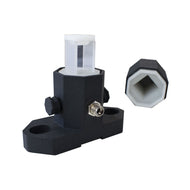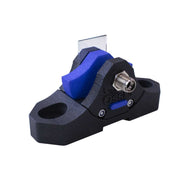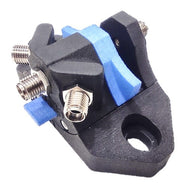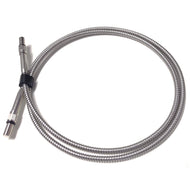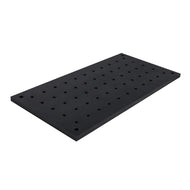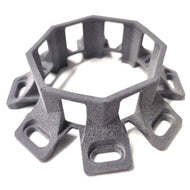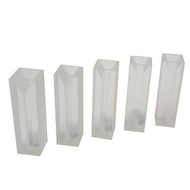Optical Spectrometer
All Measurement Equipment, Lab Equipment, Spectrometer and Accessories
Reliable and intuitive PC software, designed to help speed up your research, is provided at no extra cost. The latest versions are always available to download via our website.
Ossila Spectroscopy 1.3.0
The latest version of the measurement software for the Ossila Optical Spectrometer.
Download (90.2 MB)
Minimum System Requirements
Operating System Windows 10 or 11 (64-bit)
CPU Dual Core 2 GHz
RAM 4 GB
Available Drive Space 305 MB
Monitor Resolution 1280 x 960
Connectivity USB 2.0
Versatile, Affordable, and Simple Optical Spectrometer
Miniature USB system for UV-Vis spectroscopy measurements
Overview | Specifications | Features | Gallery | Software | In the Box | Accessories | Resources and Support
The Ossila Optical Spectrometer is an accessible system, bringing affordable UV-Vis-NIR spectroscopy to research scientists worldwide. The fully programmable, modular design fits nicely into most existing UV-Vis-NIR optical spectroscopy labs. A simple command library and trigger modes make it easy to integrate into your workflow.
The compact CCD detector, fiber optic and USB compatibility, and intuitive free software mean you can quickly start measuring the optical properties of your samples. Our versatile and modular design allows you to analyze many different samples, including solutions and thin film samples.
Buy as an independent modular spectrometer or as a part of our complete optical spectroscopy kit to get started straight away.

Two-Year Warranty
Buy with confidence
USB-C Powered
Power with your computer or laptop

Powerful Electronics
High-speed 16-bit, 500 kSPS ADC
Free Software
With free updates
Specifications
| Dimensions (D x W x H) | 78 mm x 78 mm x 38 mm (3.07" x 3.07" x 3.07") |
|---|---|
| Weight | 150 g (0.33 lb) |
| Wavelength Range | 320 nm – 1050 nm |
| Grating Blaze Wavelength | 500 nm |
| Resolution (FWHM) | 2.5 nm |
| Optical Input | SMA 905 fiber or free space |
| Entrance Slit Width | 25 µm |
| Connection Type | USB type-C |
| Communication Protocol | Serial-over-USB |
| Dark Noise* | <50 counts |
| Signal-to-Noise Ratio | >500:1 |
| Detector Type / Pixels | CCD / 1600 |
| Analog-to-Digital Converter | 16-bit, 500 kSPS |
| Data Transfer Speed* | Up to 100 fps (PC dependant) |
| Stray Light | <0.2% |
* Measured at 50 us integration time
Optical Spectrometer Features

Dynamic Spectral Range
Capable of meauring the entire visible light spectrum, from the UV-A band to near infrared. With a range of 320 nm to 1050 nm and resolution of up to 2.5 nm, our system can be used to study a wide range of materials including photovoltaic, solar cell, OLED, biological, and 2D materials.

Fast Acquisition Speeds
A powerful Arm Cortex M4 processor works with a high-speed 16-bit, 500 kSPS, analog-to-digital converter. Our system can transfer over 100 frames-per-second to the host computer when running in internal trigger mode. Plus, a six port I/O expansion header allows for easy integration with other 5V equipment.

Compact and Modular Design
The clever design of the Ossila Optical Spectrometer combines optical elements and internal electronics into an extremely small footprint. The result is a lightweight, compact but powerful UV-Vis-NIR spectrometer.

Internal and External Trigger Modes
Use in free-running mode, or integrate with other systems using the external trigger input. The rolling integration mode lets you control the integration time dynamically. With an output to synchronise acquisition with an external shutter plus two general purpose outputs, it features six I/O ports in total, including a ground port.

USB Powered
Power your optical spectrometer via the USB port. There is no need for an additional, dedicated power supply. Get up and running quickly and easily with either your computer or laptop - simply plug in via the USB port and begin measuring.
Testimonials
I have been using the Ossila Optical Spectrometer in my research to measure absorption, transmission, and reflectivity. I highly recommend it to anyone who is looking for a cheap, fast, reliable and easy-to-use spectrometer for their optical experiments.
Kyriacos Georgiou, PhD, University of Cyprus
Optical Spectrometer Gallery





Spectroscopy Software
The Ossila Optical Spectrometer comes with powerful spectroscopy software which makes it quick and easy to control the device and start collecting data.
Take background spectra and measure intensity, transmission/reflection, and absorbance measurements in just a few clicks. The spectroscopy software also features spectral averaging and accumulation, peak detection, offset and gain adjustment, and more - all via a straightforward user interface.
Software updates are provided at no extra charge and are available to download from our website.


In the Box
- Optical spectrometer
- USB-C power cable
- Detector filter for spectroscopy in the visible range
Accessories and Related Products
Optical Spectroscopy Kit

- Unbeatable Value
- Includes Spectrometer and Accessories
Worldwide Delivery £2400
